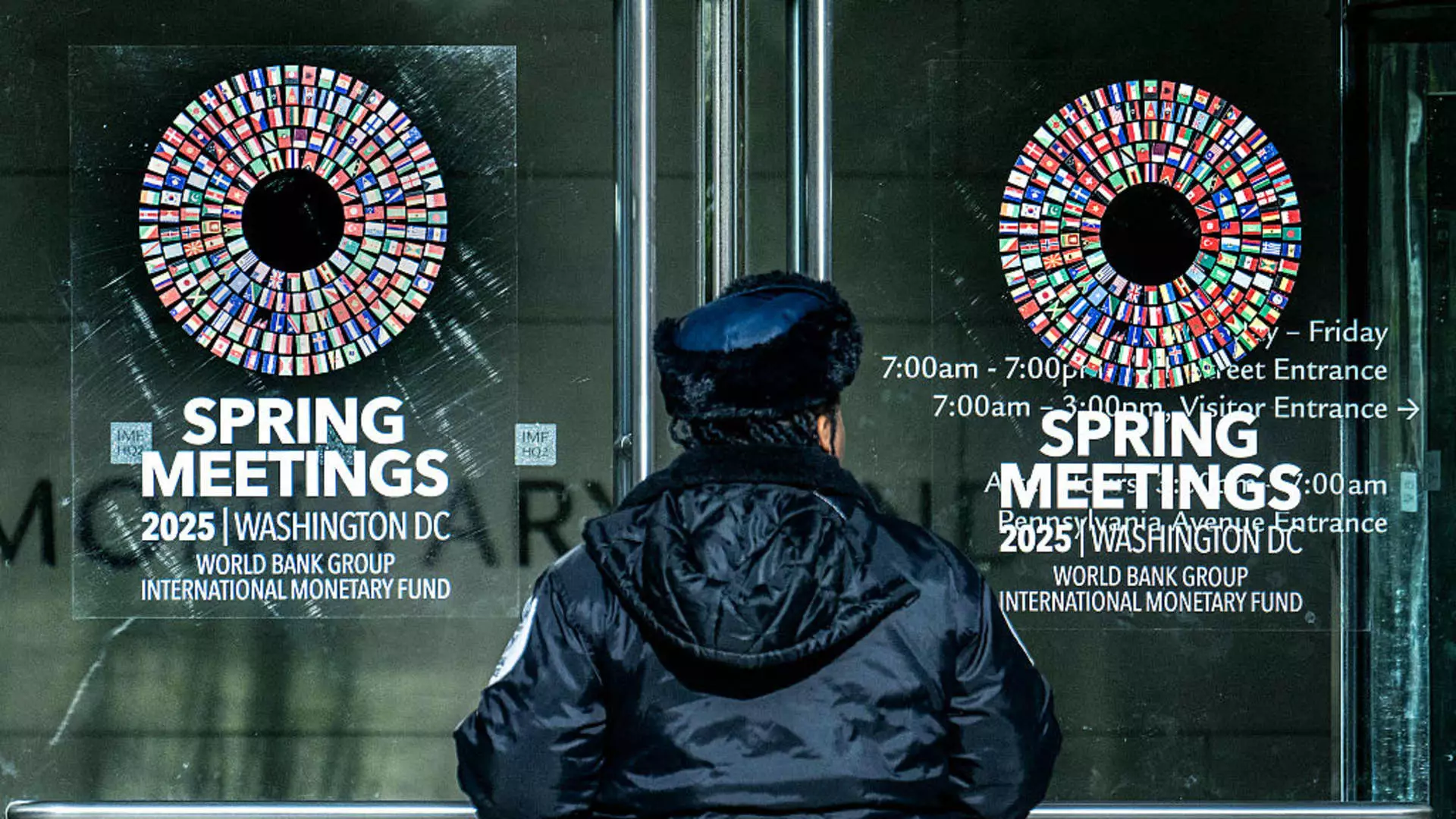As the world grapples with interconnected economies, the recent downgrade in growth forecasts by the International Monetary Fund (IMF) reveals a troubling narrative for major Asian economies. With halved optimism, the IMF has slashed its GDP predictions for China and India to 4% and 6.2% for 2025, respectively. This reduction isn’t merely a statistical revision; it signifies the tightening grip of policy uncertainty and escalating trade tensions that threaten economic stability across the region. The bitter realities of tariffs and retaliatory measures have plunged both nations into a quagmire of economic apprehension.
The IMF attributes these gloomy forecasts to broader global dynamics, specifically the trade war ignited by the United States. The newfound unpredictability surrounding tariffs announced by the U.S. and its allies poses a substantial challenge to economic predictability. Such measures not only discourage trade but sow discord and frustration amongst nations that strive for mutual growth. China and India, with their burgeoning markets, seemed poised for advancement, yet they now face a precarious cliff, stripped of confidence by the unpredictability of American trade policies.
High Stakes and High Costs
The cascading effects of U.S. tariffs are undeniable; China, once a titan of growth, finds itself grappling with an economic slowdown as GDP forecasts dwindle. Critically, the IMF’s analysis suggests that the trade tensions are more than a mere bump in the road—they are indicative of a systemic shift that could reshape global economic landscapes. The creeping realization that America’s punitive measures could yield stark economic consequences is chilling. Nations like India, which have traditionally relied on a steady growth trajectory, must now recalibrate ambitions as external pressures coalesce and strangle progress.
Moreover, the forecast for Japan stands starkly diminished, with predictions now landing at a dismal 0.6%. Once resurgent from its historical stagnation, Japan seems ensnared by the repercussions of international trade policies. The naive optimism of a burgeoning renaissance, now eclipsed by the looming specter of economic retreat, raises pressing questions about the sustainability of Japan’s growth—and indeed, that of the entire region.
The Fragile Political Landscape
The political landscape surrounding these economic forecasts is equally concerning. The U.S. under President Trump has adopted a combative posture toward international trade, which jeopardizes relationships critical to maintaining global economic equilibrium. Trump’s unpredictable tariff strategies make clear that diplomacy is no longer the first course of action; rather, it’s a battle of wills, with countries like China and India at the crux of this unfolding drama.
Contrast this with Japan, which has pursued a more diplomatic approach. This divergence in strategy reflects not just national priorities but a deeper ideological divide regarding the role of collaboration in securing economic futures. Japan’s proactive efforts to negotiate with the U.S. demonstrate an understanding that survival in the global economy necessitates dialogue, even as it acknowledges the pervasive risks posed by unilateral actions. Meanwhile, India’s cautious overtures to American officials showcase its intent to maintain a favorable standing, even amidst growing uncertainty.
The Crucible of Market Resilience
What looms larger than the immediate figures are the implications this forecast carries for market resilience across Asia. The uncertainty bred by trade policy volatility could foster an environment of contraction, discouraging investments that are vital for growth. While the IMF maintains a global growth projection at a meager 2.8%, it requires the collective will of nations to transcend these challenges.
Economic ambitions must not wither under the weight of oppressive tariffs and retaliatory diplomacy. Instead, this moment could galvanize Asian economies to seek new partnerships and innovate in ways that transcend traditional bilateral trade dynamics. Driven by necessity, nations must explore alternative avenues for expansion, perhaps even advocating for multilateral frameworks that dilute the impact of any single nation’s economic decisions.
The path ahead will certainly not be linear, fraught as it is with systemic challenges and politicized barriers. But out of adversity springs resilience and opportunity—a clarion call, if you will, for nations to rise above the chaos and rethink their strategies and alliances. Amidst the turmoil, it is crucial that they strive not only for survival but for sustainable growth in an increasingly interconnected yet unpredictable world.


Leave a Reply